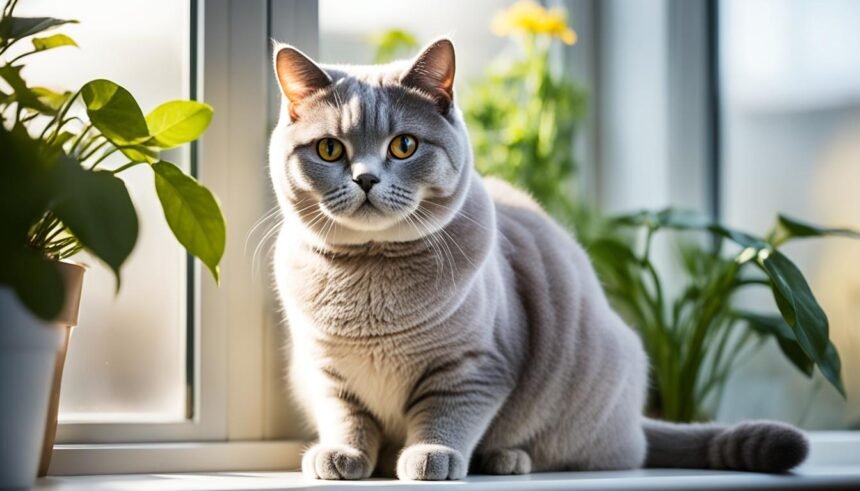Lions, the majestic felines of the African savannas, face many challenges. Both in the wild and in captivity, their lives are complex. Conservation efforts help protect them, but the effect of captivity on their lifespan is still debated.
Zoos and sanctuaries aim to meet the needs of these creatures. They also want to educate and help conserve them. It’s important to understand what affects the lifespan of lions in captivity.
Lions in captivity get vet care and a safe place to live. Yet, they face unique challenges that can shorten their lives. Young, captive-bred lions often have high mortality rates. Confined spaces can also harm their physical and mental health.
Looking into how captivity affects lion longevity is key. It helps us find the best ways to keep these iconic animals healthy and alive for a long time.
Understanding the Natural Lifespan of Lions in the Wild
Lions in the wild face many challenges that affect their lifespan. Unlike lions in captivity, wild ones must deal with hunger, disease, and attacks from other lions. Sadly, humans are the biggest threat through hunting, poaching, and habitat loss.
Factors Affecting Wild Lion Survival
In the wild, lions usually live between 8 to 10 years. Many risks threaten their lives, especially for cubs. Only about 1 in 8 cubs make it to adulthood. Most lions die young due to violence.
Average Life Expectancy in Natural Habitats
Lions in their natural habitats can live up to 13 to 15 years. But, this can change based on where they live and the environment. For example, the Asiatic lion population in India’s Gir National Park is around 500 to 700 lions.
Gender-Based Lifespan Differences
- Female lions usually live longer than males.
- This is because females have different roles in the pride and face fewer violent threats.
“Conflict with humans, particularly herders, outside of national parks remains a significant issue, resulting in high lion mortality rates.”
The International Union for the Conservation of Nature (IUCN) says lions are vulnerable. This shows we need to act fast to save these amazing animals and their homes.
Lions in Captivity Lifespan: Key Statistics and Comparisons
Captive lions often live longer than those in the wild. They face special challenges that can affect their life span. Studies show that the average lifespan of lions in captivity is about 15 years. Some can even reach up to 30 years under human care.
A study found that 40.4% of captive lion skulls had abnormalities. This is compared to only 4.2% of wild lion skulls. This shows that captivity might lead to health problems that shorten their life.
| Metric | Wild Lions | Captive Lions |
|---|---|---|
| Average Lifespan | 15 years | 15-30 years |
| Skull Abnormalities | 4.2% | 40.4% |
| Mortality Rate (under 2 years) | N/A | 40.5% |
| Cause of Death (unknown) | N/A | 74.5% |
Even though captive lions may live longer, captivity brings its own set of challenges. These challenges can affect their health and life span. More research is needed to understand these factors. This will help ensure the well-being of these amazing animals.
The Impact of Captive Breeding on Lion Mortality Rates
Captive breeding programs are key in saving lions, but they face big challenges. Recent studies show a high death rate among young lions born in captivity.
Early Life Survival Rates
A 2002 study found that 40.5% of captive-born lions died before they were two years old. This high death rate makes us question if captive breeding can really help lions survive.
Common Causes of Death in Young Lions
- Infanticide and stillbirth were some causes, but 74.5% of young lions died from unknown reasons.
- Diseases, poor nutrition, and health problems are thought to contribute to the high death rate among lion cubs and young lions in captivity.
Breeding Program Challenges
Captive breeding programs struggle to keep lions healthy. The stress and conditions of captivity deeply affect the breeding program and mortality rates. It’s vital to tackle these issues to improve lion survival in captivity.
“In the Serengeti, only 37.5% of cubs reach the age of one. Infant mortality caused by infanticide, disease, and starvation is a major concern in both wild and captive lion populations.”
The high death rate among young lions in captive breeding programs shows we need more research and better management. By understanding and addressing these challenges, we can make conservation efforts more effective and sustainable for this iconic species.
Skull Abnormalities and Health Issues in Captive Lions

Captive lions face many health problems, including skull issues. Studies show these problems are common in captive lions but rare in wild ones.
Researchers looked at over 500 lion skulls and 389 tiger skulls from museums. They found 40.4% of lion skulls had problems. Only 4.2% of wild lion skulls did.
These problems, like misshapen skulls and jaws, are likely due to bad living conditions and poor diet. The lions came from zoos in many places, showing this issue is widespread.
| Skull Abnormality Prevalence | Captive Lions | Wild Lions |
|---|---|---|
| Percentage of Skulls with Abnormalities | 40.4% | 4.2% |
Captive lions also have many other health issues. A study in South Africa found 63 pathogens in lions, leading to 83 diseases and symptoms.
With over 8,500 lions in South Africa, the risk of diseases spreading to humans is high. The close contact between lions and people in breeding operations is a big health risk.
These findings highlight the need to improve the health and welfare of captive lions. We must understand and fix the causes of these problems to protect both lions and people.
Environmental Factors Affecting Captive Lion Longevity
Lions in captivity face unique challenges that can affect their lifespan. In the wild, they roam large areas, which is key for their health. But, in captivity, they often have less space, leading to stress and shorter lives.
Space and Territory Requirements
Captive lions need enough space and territory. Studies show that in 84% of species, zoos help both males and females live longer, especially for short-lived ones. But, for longer-lived species, the lack of space and natural stimuli can harm their health and lifespan.
Dietary Considerations
Proper diet is vital for captive lions’ longevity. The quality of their food affects their nutrition, health, and lifespan. It’s important to provide the right nutrients and calories for them to thrive.
Social Structure Impact
The social life of captive lions is also crucial. In the wild, they live in complex groups with strict hierarchies. Captivity can disrupt this, causing stress and aggression. It’s important to let them maintain their social bonds for their health and longevity.
“Maintaining the appropriate environmental factors, including space, diet, and social structure, is essential for maximizing the longevity of captive lions and ensuring their overall well-being.”
Physical and Psychological Effects of Captivity on Lions
Captivity can harm lions physically and mentally. One clear sign is pacing, a stress behavior. Lions in captivity pace more than those in the wild. This is because they find it hard to adjust to their small, controlled space.
To keep lions calm for shows, some places use cruel methods. They drug, restrain, declaw, and defang the lions. Declawing and defanging cause lasting pain and harm their quality of life. It can even shorten their lives.
“Captivity can have severe physical and psychological consequences for lions. Practices like declawing and defanging are particularly harmful, causing ongoing pain and distress that can profoundly affect the animals’ well-being.”
Captivity also leads to health problems in lions. They might lose weight, have weak immune systems, and face reproductive issues. These problems can make their lives shorter than those of wild lions.
The harm captivity causes lions is a big worry. We need to think about their welfare and take action to help these amazing animals.
Conservation Efforts and Their Impact on Lion Lifespan
Lion conservation efforts aim to protect these majestic creatures and extend their lifespan. However, the effectiveness of captive breeding programs has been debated, as they often face high mortality rates among young lions. True conservation requires a focus on protecting lions in their natural habitats.
Breeding Programs Assessment
Hundreds of breeding facilities in South Africa hold thousands of captive lions. Most of the country’s lion population lives in captivity. While these programs may boost lion numbers, they do not address habitat loss and human-lion conflict.
In fact, the marketing of large carnivore breeding and care centers to conservation volunteers under false pretenses is common. This leads to unethical practices and the exploitation of these animals.
Habitat Protection Initiatives
Habitat protection initiatives are crucial for maintaining healthy wild lion populations. Over the past century, lion populations have plummeted from an estimated 200,000 to just 20,000 today. This decline is mainly due to habitat loss and human encroachment.
Efforts to conserve lion habitats, such as creating protected areas and sustainable land-use practices, have shown promising results. For example, the Asiatic lion population in India has increased from 523 in 2015 to 674 in 2020, thanks to habitat protection initiatives. However, more work is needed to secure the future of lion populations, as they are predicted to face extinction in the wild by 2050 if current trends continue.
“The survival of lions is ultimately tied to the preservation of their natural habitats. Protecting these critical ecosystems is the key to ensuring the long-term viability of lion populations.”
| Statistic | Value |
|---|---|
| Lion population 100 years ago | 200,000 |
| Current estimated lion population | 20,000 |
| Percentage of lion species disappeared in the last 20 years | 42% |
| Percentage of historic lion range lost | 85% |
| Increase in Asiatic lion population in India (2015-2020) | 28.5% |
| Predicted extinction of African lions | By 2050 |
While conservation efforts have made some progress, the challenges facing lion populations remain significant. Ongoing habitat loss, human-wildlife conflict, and the demand for lion products in the Asian market continue to threaten these majestic animals. Sustained and strategic efforts are needed to protect lion habitats, mitigate human-lion conflicts, and address the root causes of lion population declines.
Comparing Wild vs. Captive Lion Population Demographics

Looking at the numbers, wild and captive lions show big differences. Wild lions have much higher death rates, especially for cubs. Only about 1 in 8 wild lion cubs makes it to adulthood. This shows how tough it is for them to survive.
Captive lions, however, might live longer. They often live past their wild friends. But, they face their own problems like more skull issues and stress behaviors.
| Metric | Wild Lions | Captive Lions |
|---|---|---|
| Cub Mortality Rate | 87.5% | Lower |
| Median Life Expectancy | Lower | Higher |
| Skull Abnormalities | Rare | More Common |
| Stress-related Behaviors | Minimal | More Prevalent |
It’s key to understand these differences to help lions. We need good plans to protect both wild and captive lions. By knowing their unique struggles, we can help them thrive for a long time.
The Role of Zoos in Lion Conservation and Lifespan
Zoos are key players in lion conservation. They work hard to keep these amazing animals safe. Modern zoos focus on making life better for lions, helping them live longer.
Modern Zoo Practices
Zoos have improved a lot in caring for lions. They use new medicine to catch and treat diseases early. They also focus on making sure lions are happy and healthy.
This has helped lions in zoos live much longer. Some marine mammals in zoos now live up to 3.55 times longer than those in the wild.
Quality of Life Measures
Keeping lions happy and healthy is very important. Zoos give them lots of space and the right food. They also make sure lions have friends and a good environment.
But, there are still worries about zoos. Lions in zoos for tourists might not live as long as wild ones. This is because they are stressed and don’t live in their natural way.
Practices like declawing and defanging are also a problem. They show we need to make zoos better. But, zoos are still important for lions. They can make a big difference in their lives.
Challenges in Managing Aging Captive Lions
Zoos and sanctuaries face big challenges as captive lions live longer. This is thanks to better vet care and food. Older lions get sick with complex health problems that need special care to keep them happy and healthy.
Older lions often have physical issues like arthritis and organ problems. These issues can really hurt their quality of life. It’s like how many older people and pets deal with pain every day.
There’s also a lack of knowledge on how exotic animals age in captivity. This makes it hard to care for them properly. Each aging lion is different, making it tough to find the best care for all.
- Addressing the unique nutritional and environmental needs of geriatric captive lions
- Implementing specialized veterinary care and pain management strategies
- Ensuring the physical and psychological well-being of aging lions in captivity
- Fostering collaborative research to enhance our understanding of aging in exotic species
Zoos and sanctuaries need to create better care for aging lions. This will help these amazing animals live their best lives as they get older.
“The true measure of a society can be found in how it treats its most vulnerable members.”
By tackling the challenges of caring for aging lions, we help them and support conservation. This is a big step for these iconic animals.
Future Perspectives on Lion Conservation and Captivity
The future of lion conservation and captivity is a topic of ongoing debate. There is a growing awareness of the negative impacts of wildlife tourism and unethical practices in captive facilities. Advocating for legislation to ban inhumane practices and promoting ethical practices are important steps in ensuring the welfare of lions.
There are estimated to be around 297 lion breeding parks in South Africa. About a third of them offer cub interactions to the public. The number of lions in captivity in South Africa is believed to range between 6,000 to 8,000, with some estimations reaching as high as 10,000. In comparison, there are only approximately 20,000 wild lions left in the world.
Canned hunting, which is legal in South Africa, involves trophy hunting within a fenced enclosure to ensure success for the hunter. Hand-reared lions in such facilities are often habituated to humans, making them easy targets for hunters. This practice raises significant concerns about the future of captivity and its impact on lion conservation efforts.
Future lion conservation efforts should focus on protecting lions in their natural habitats while improving conditions for those in captivity. Sanctuaries, such as those run by the Born Free Foundation, provide rescued big cats with a chance at a more natural life after being subjected to cruelty in private ownership, zoos, or circuses.
“The global captive lion population far exceeds the number of wild lions, raising concerns about the ethics and implications of captive breeding practices.”
Reforms in the hunting industry, such as age-based restrictions on trophy lions, have been recommended over a decade ago. However, the income generated for local communities from hunting areas is estimated at less than 3% of total hunting income per annum, equating to $0.62 USD per annum per local community person.
Alternatives to hunting, such as photographic tourism, are gaining traction. Botswana’s tourism figures surpassed 2 million in 2016, indicating the demand for non-consumptive tourism within the country. Public opinion is increasingly averse to lion/wildlife trophy hunting due to emotionally driven ethics, regardless of regulatory adherence.
In conclusion, the future of lion conservation and captivity requires a multifaceted approach. It must prioritize the ethical treatment of lions, promote sustainable tourism, and invest in habitat protection and restoration efforts. By addressing the complex challenges facing lion populations, we can ensure a brighter future for these majestic animals.
Conclusion
The impact of captivity on lion lifespan is complex. Captive lions might live longer than wild ones. But, they face challenges that affect their quality of life.
It’s important to balance conservation, improve captive conditions, and protect wild habitats. This balance is key to lions’ long-term survival and well-being.
Ethical practices and informed decisions are crucial for lion conservation. Zoos and captive facilities are vital for biodiversity. But, their success should also consider animal well-being and ecological integrity.
As scientists study captivity’s effects, their findings will guide better conservation strategies. This will help improve how animals are treated in captivity. By working together, we can ensure a better future for lions.
FAQ
What is the lifespan of lions in the wild?
In the wild, lions live about 10 to 14 years. Female lions usually live longer than males.
How does the lifespan of lions differ in captivity compared to the wild?
Lions in captivity often live longer than those in the wild. But, they face unique challenges. These include skull problems and stress behaviors.
What are the major threats to the survival of lions in the wild?
Wild lions face many dangers from birth. These include starvation, disease, and injuries. Humans are the biggest threat through hunting and habitat loss.
How do captive breeding programs impact the lifespan of lions?
Captive breeding programs struggle with high death rates among young lions. A study found that 40.5% of captive-born lions died before two years old. Most deaths were from unknown causes.
What health issues are common in captive lions?
Skull problems have been seen in captive lions since the 15th century. Studies show 40.4% of captive lion skulls have these issues. Only 4.2% of wild lion skulls do.
How do environmental factors in captivity impact the lifespan of lions?
Captive lions face many environmental challenges. These include stress from small spaces, diet issues, and social structure problems.
What are the physical and psychological impacts of captivity on lions?
Captivity can harm lions physically and mentally. They may show stress behaviors like pacing. Some zoos use cruel practices, which can shorten their lives.
How do conservation efforts impact the lifespan of lions?
Conservation efforts aim to protect lions and extend their lives. But, captive breeding programs have high death rates. True conservation focuses on protecting lions in their natural habitats.
How do zoos impact the lifespan of captive lions?
Zoos play a big role in lion conservation. They aim to improve lions’ lives. But, there are still concerns about captive breeding and lion welfare in zoos.
What challenges are involved in managing aging captive lions?
As captive lions age, they may face health issues. Special care is needed to ensure their quality of life and extend their lifespan.













